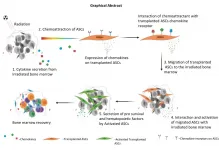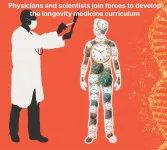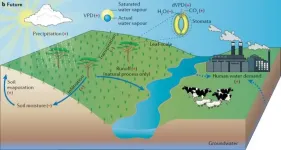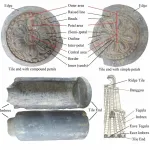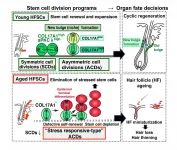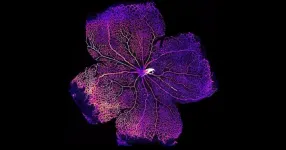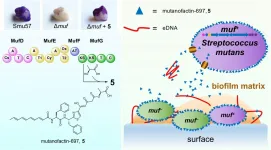(Press-News.org) Durham, NC - Nuclear power offers an efficient, reliable way to provide energy to large populations - as long as all goes well. Accidents involving nuclear reactors such as those that took place in 1986 at Chernobyl and at Fukushima Daiichi after the March 2011 tsunami raise major concerns about what happens if the worst occurs and large numbers of people are simultaneously exposed to high levels of radiation. Currently, there are no effective, safe therapies for total body irradiation (TBI) - a condition known as acute radiation syndrome (ARS). That could change, in the future based on new research published in STEM CELLS Translational Medicine.
Researchers at the University of Pittsburgh Medical Center (UPMC) demonstrated, for the first time, how allogeneic adipose-derived stem cells (ASCs) can mitigate TBI-induced ARS. This would allow for the stockpiling of these cells to be used in case of a radioactive emergency.
"In nearly all instances of TBI exposure, the primary life-threatening damage is inflicted on the hematopoietic system, which primarily consists of the bone marrow, spleen, tonsils and lymph nodes involved in the production of blood. High doses of radiation can cause irreparable damage to the bone marrow, affecting the immune system and potentially causing inflammation and infection," said the study's co-author, Asim Ejaz, Ph.D., from the UPMC Department of Plastic Surgery.
A matched hematopoietic stem cell transplant is the current therapy of choice. Patients are either able to donate their own stem cells for transplantation - called an "autologous" transplant - or a donor whose stem cells are a good match is found. The odds of finding an adequate match is low at about 30 percent and for some populations the odds are even less.
"That fact leads to the major issue with relying on this type of therapy: In a mass population exposure scenario involving several hundred to millions of individuals, hematopoietic stem cell transfusion is an impossible way forward as there is just no way to treat massive numbers of people who are exposed to radiation at the same time. And unfortunately, such a delay in treatment for a large number of individuals would most certainly lead to an increase in their mortality rate," Dr. Ejaz said.
Several drugs are currently being looked at as potential therapies, but none provides complete protection, and all have unwanted side effects. This leaves the need for alternative therapies. Previous studies have reported that mesenchymal stem cells derived from bone marrow, placenta or Wharton's jelly can mitigate the effects of ARS. However, low yield and difficulty in harvest and mass production of these cells for stockpiling are some of their drawbacks.
"There is one attractive cell-based candidate we're looking at," said J. Peter Rubin, M.D., chair of the Department of Plastic Surgery at UPMC and a co-author of the study, "and that is adipose-derived allogeneic stem cells (ASCs). These are mesenchymal stem cells derived from adipose tissue (fat), which can easily be harvested in vast quantities from donors via liposuction.
"Adipose-derived ASCs have been proven to be safe, they have self-renewal capacity and can undergo differentiation to mature cells," he added. "They also are very easy to propagate in cell culture compared to other cell types, which means they can be stockpiled for application at mass levels in case of radiation accidents."
The team's study focused on how treating mice that were exposed to high levels of radiation with injections of allogeneic ASCs measured up to treating them with autologous ASCs. In particular, they wanted to see if the injections would improve the animals' survival rates and repair damage to their hematopoietic systems.
The injections were given 24 hours after the mice were exposed to the radiation. When, 35 days later, the researchers examined the results, they found that the allogeneic ASC-treated groups performed equally to the autologous cells in improving the animals' survival and recovery rates vs. the non-treated control group.
"The ASCs had migrated to the bone marrow and facilitated repair by secreting several factors known to reduce oxidative stress and rescue damaged bone marrow cells from apoptosis," Dr. Ejaz said.
Added Dr. Rubin, "This suggests that allogeneic ASCs therapy may be beneficial for clinical adaptation to treat TBI-induced toxicities. Further studies will help to advocate the scale-up and adaptation of allogeneic ASCs as the radiation countermeasure."
"The data from this pre-clinical study suggesting the ability of fat-derived stem cells as a therapy to effectively mitigate acute radiation syndrome is interesting and potentially useful," said Anthony Atala, M.D., Editor-in-Chief of STEM CELLS Translational Medicine and Director of the Wake Forest Institute for Regenerative Medicine. "Currently, there are no effective and safe approaches to treat mass population exposure to acute radiation syndrome; we welcome future studies that will enable the clinical adaptation of this type of therapy."
INFORMATION:
The full article, "Allogeneic adipose-derived stem cells mitigate acute radiation syndrome by the rescue of damaged bone marrow cells from apoptosis," can be accessed at https://stemcellsjournals.onlinelibrary.wiley.com/doi/abs/10.1002/sctm.20-0455.
About STEM CELLS Translational Medicine: STEM CELLS Translational Medicine (SCTM), co-published by AlphaMed Press and Wiley, is a monthly peer-reviewed publication dedicated to significantly advancing the clinical utilization of stem cell molecular and cellular biology. By bridging stem cell research and clinical trials, SCTM will help move applications of these critical investigations closer to accepted best practices. SCTM is the official journal partner of Regenerative Medicine Foundation.
About AlphaMed Press: Established in 1983, AlphaMed Press with offices in Durham, NC, San Francisco, CA, and Belfast, Northern Ireland, publishes two other internationally renowned peer-reviewed journals: STEM CELLS®, celebrating its 39th year, is the world's first journal devoted to this fast paced field of research. The Oncologist®, also a monthly peer-reviewed publication, entering its 26th year, is devoted to community and hospital-based oncologists and physicians entrusted with cancer patient care. All three journals are premier periodicals with globally recognized editorial boards dedicated to advancing knowledge and education in their focused disciplines.
About Wiley: Wiley, a global company, helps people and organizations develop the skills and knowledge they need to succeed. Our online scientific, technical, medical and scholarly journals, combined with our digital learning, assessment and certification solutions, help universities, learned societies, businesses, governments and individuals increase the academic and professional impact of their work. For more than 200 years, we have delivered consistent performance to our stakeholders. The company's website can be accessed at http://www.wiley.com.
About Regenerative Medicine Foundation (RMF): The non-profit Regenerative Medicine Foundation fosters strategic collaborations to accelerate the development of regenerative medicine to improve health and deliver cures. RMF pursues its mission by producing its flagship World Stem Cell Summit, honouring leaders through the Stem Cell and Regenerative Medicine Action Awards, and promoting educational initiatives.
16th of March, Tuesday, 2021 -- Longevity medicine is a rapidly evolving branch of preventative precision medicine that is specifically focused on promoting healthspan and lifespan, utilizing aging biomarkers commonly referred to as aging clocks. Over the past decade advances in AI and machine learning enabled the development of deep aging clocks (DACs) and other novel tools to track the rate of aging. In parallel novel preventative and therapeutic interventions have been discovered or progressed into clinical trials. Many medical and public health professionals do not have time to read the thousands of research papers covering this new field and actively engage in cutting-edge innovation ...
Global drylands are experiencing faster-than-average warming and are also among the most vulnerable regions to climate change. Meteorological metrics all point to an emerging trend of increased surface aridity, raising concerns of land desertification and degradation. However, recent satellite observations also show lusher drylands, in apparent contradiction to the image of drylands becoming drier. In a new Review Article published in Nature Reviews Earth & Environment, an international team comprehensively examined global dryland aridity changes with evidence from the literature and various sources of Earth observations and numerical ...
New findings on the diet of Arctic foxes, determined by the condition of their teeth, show how varying climate conditions in the Arctic affect the animals that live there.
In a study published in Polar Biology, Peter Ungar, Distinguished Professor of anthropology at the University of Arkansas, and several co-authors analyzed tooth breakage and wear - both gross and micro - of Arctic foxes from Russia's Yamal Peninsula.
Studying the effect of varying climate conditions within this region helps scientists understand the impact of climate change on ...
When it comes to electric vehicles, particularly for heavy-duty trucks, the limitations of battery technology are often seen as the main barrier to widespread adoption. However, a new analysis concludes that it's the lack of appropriate policies around adoption incentives, charging infrastructure, and electricity pricing that prevents widespread electrification of commercial trucking fleets.
Researchers from the Department of Energy's Lawrence Berkeley National Laboratory (Berkeley Lab) and the University of California, Los Angeles published a new study that makes the case for prioritizing public policy to help move long-haul trucking from diesel to electric. Doing so will mean huge gains in addressing the ...
Kanazawa, Japan -- Any visitor to China will have noticed the spectacular roofs on buildings dating from imperial times. However, the question of how these roof tiles were produced has attracted relatively little attention from archaeologists. Now, a team of researchers has conducted a major study of tile ends unearthed at the Ximing Temple in Xi'an, yielding exciting insights into their production.
In a study published in Archaeological Research in Asia, researchers from Kanazawa University and the Chinese Academy of Social Sciences have revealed the significance of minute variations in the tile ends used in the roof of the famous Ximing Temple in Xi'an, built during the ...
Researchers from Tokyo Medical and Dental University (TMDU) identify a novel mechanism underlying hair thinning and loss during aging
Tokyo, Japan - Hair grows from stem cells residing in hair follicles. During aging, the capability of hair follicles to grow hair is successively lost, leading to hair thinning and ultimately hair loss. In a new study, researchers from Tokyo Medical and Dental University (TMDU) and the University of Tokyo identified a novel mechanism by which hair follicles lose their regenerative capabilities.
Hair follicles are mini-organs from which new hair constantly grows. The basis for new hair growth is the proper function of hair follicle stem cells (HFSCs). HFSCs undergo cyclic symmetric and asymmetric cell divisions ...
A genetic defect could hold the key to preventing or delaying the onset of a debilitating eye disease that can lead to vision loss and blindness.
MacTel (macular telangiectasia type 2) affects one in 1,000 Australians. Symptoms include slow loss of vision, distorted vision and trouble reading. Because early signs of the disorder are subtle, it is difficult to diagnose.
Researchers have identified an additional seven regions in the human genome that increase the risk of developing the condition, including a rare DNA mutation in the PHGDH gene, which will help clinicians to better diagnose and treat ...
Nanograined metals and alloys, whose grain size is less than 100 nm, exhibit extremely high strength and high ductility, possessing excellent mechanical properties. Nanograined materials, however, have a large number of grain boundaries and hence high total grain boundary energy. At a temperature higher than a critical temperature, grains in nanograined materials will grow spontaneously to reduce the grain boundary energy, leading to thermal instability of the materials. A common approach to enhance the thermal stability is via grain boundary energy segregation, which thermodynamically lowers the grain boundary energy and kinetically pins ...
An inter-disciplinary team of researchers led by Prof. Qian Peiyuan, Chair Professor at the Hong Kong University of Science and Technology (HKUST)'s Department of Ocean Science and Division of Life Science has unraveled how a novel microbial small molecule released by Streptococcus mutans (S. mutans) - a bacterium commonly found in the human oral cavity - is connected to dental caries development using a synthetic biology approach, offering new insights to the health impact of the human oral microbiota and facilitating future research on the prevention of tooth decay. The research findings were recently published in the prestigious scientific journal Nature Chemical Biology and reported by Nature as one of the research highlights.
Every wetted surface on our ...
The Three Gorges project, completed in 2009, is one of the world's largest hydropower projects. It has brought important social and economic benefits in flood control, power generation, shipping and water resources redistribution.
But how does such a large-scale water conservancy project affect the local climate, and is the response to climate change a relatively vulnerable one? The Three Gorges Project has been repeated questioned, especially whenever rainstorms, floods and drought hit the area around the reservoir area or its neighboring areas, since ...
